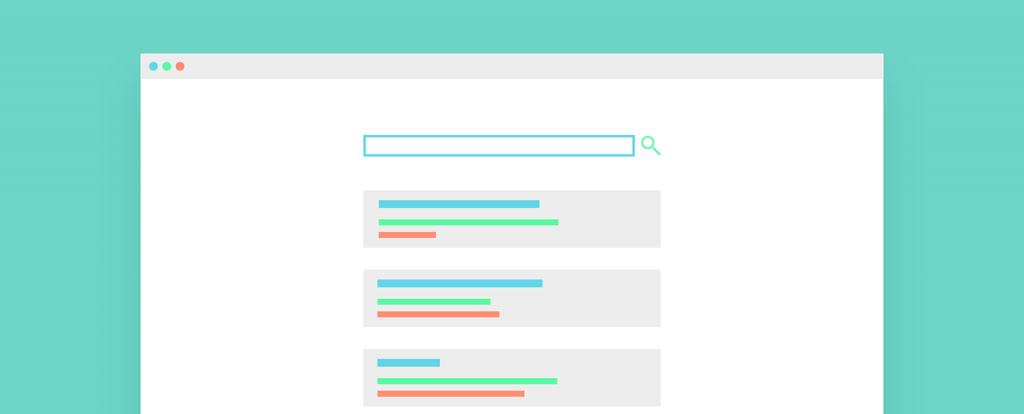Traffic from search engines is one of the most important sources of traffic due to factors such as its high quality, the fact that it is free, and the abundance of it as long as you stay on top of your Search Engine Optimization (SEO). In this article, we are going to be providing you with an in-depth overview of one of the most important aspects of SEO known as search snippets.
Google Search Snippet is the term that is used to describe a major feature of Google Search where bots known as crawlers analyze the pages of your website. Once the data on your website has been analyzed, Google will automatically generate the snippets which will incorporate information such as the title of the page, the page’s content, images, and URL.
This information in its most basic form will be incorporated to create what is commonly known as a Plain Blue Link that will include the title, URL, and the snippet which is the description at the bottom of the individual search result.
As the website owner, you have the ability to enhance the search snippet, this is done by providing more information to Google’s search algorithm, that it can analyze and possibly employ. Another important aspect is making it easy for Google crawlers to find and understand the content of your website. We will delve deeper into optimization in the Snippet Optimization section below.
Putting in the effort to enhance your search snippets is a win-win situation for both you and search engines such as Google. People searching will be more likely to click on the search results that lead them to your website and Google is able to provide more accurate as well as higher quality search results.
Table of Contents
Double Snippet
The Double Snippet is a new rumored feature that is currently being tested by Google. It is an exciting new component that will see two Feature Snippets instead of one. Google has stated that it is adding this feature “to help people better locate information”. The Double Snippet feature is also known as ‘Multifaceted Featured Snippets’, the great thing about this is that it does not require any extra work as long as your
The way it works is that for example if an individual types in Google “What is the best cheese for pasta bake?”. They will receive a featured snippet that will answer their question, and then they will get other featured snippets that will provide them with extra information such as the recommended temperature to bake the cheese when making a pasta bake. Such a feature will improve the usefulness of Google search queries and also generate extra organic traffic to quality websites.
Research conducted by the authoritative Moz SEO software company has found out that the most likely search queries to feature a Double Snippet are those made up of high in demand keyword nouns. Two of the examples that they cited were “computer” and “insurance”.
Featured Snippet
We have mentioned featured snippets a few times in this article, so what is a featured snippet? A featured snippet is a snippet that appears at the very top of the page that during the latest Google browser version is underlined by a thin grey line. It is beneficial for a website owner to optimize their website for this as it will result in more traffic.
According to Hubspot’s research, a featured snippet will see double the click-through rate (CTR) than a search result that is not. Click-through rate is a metric that is used to calculate the number of times a search result is interacted with out of the total number of impressions.
Moreover, as long as you are creating quality content that is also optimized you will have a good shot at landing a featured snippet in the Google Search Results. In a study by Ahrefs 99.58% of featured snippet results were already ranked in the top 10 results for the search query, while a separate study by Getstat found that 70% of pages that were featured were not the top search result. If you are struggling with content ideas, you can start off by creating a hit list for your blog ideas.
Another fairly unknown benefit of featured snippets is that when Google Assistant is used that the featured snippet will be used as the answer to the voice-initiated query. Google Voice Search is a popular feature particularly on Android devices, it is essentially an alternative to Apple’s Siri and Amazon’s Alexa. Although when the Google Assistant is used, the user will not automatically visit your website, they will have the option to do so if they want more information.
Types of Featured Snippets
Featured snippets come in three distinct forms that we ranked by how common they are according to Getstat data. Each of these featured snippet versions are covered in more detail underneath:
Paragraph (81.95%), this is the overwhelming style that you will see a featured snippet in, it consists of a large body of text above the title of the post, with the link below the title. Additionally, it may also feature an image although this is not always the case.
List (10.77%), the second most popular type of feature snippet is the list, it most commonly appears for list search queries such as ‘what are the biggest countries in the world?’ or for tutorials such as ‘how to make bolognese?’. The layout is similar to the paragraph style, with an image sometimes also being displayed.
Table (7.28%), finally you have the table format, which is much more simple than the other two as it simply features top rows with the title and URL being visible at the bottom.
Being knowledgeable about these formats of featured snippets can be beneficial for ranking since you are able to target a keyword or search query with a format that makes it easier for the individual searching to find the answer that they are looking for.
Snippet Optimization
The final aspect that we are going to address in this informational blog post is how to properly optimize your website and its pages in order to be able to benefit from Google’s snippets.
Permission to index
Before you begin creating the content, you need to make sure that your website can be indexed by Google. If you are using a third-party platform such as WordPress you may have selected an option that tells Google not to index your website. Make sure that this is not the case.
Title
Next, it is important to focus on the titles. Google recommends that you use descriptive titles that are also concise or to be more precise between 50 and 60 characters. You should also avoid keyword stuffing or in other terms from spamming as many keywords as possible in the hope of your page ranking higher in the search results. We also have a post about how to make good titles, check it out.
Content
Now, you will need to take care that your content is good in order to make sure that your snippet is well enhanced. If you are trying to rank with a paragraph snippet, then you should try to answer the question in one paragraph that is made up of 46 words which according to research is the optimum length. You have to make sure that this is good quality, otherwise, over time Google will de-rank your snippet if it is not the most informative.
Meta description tag
Google also gives you some control over your snippets however it requires an intermediary level of HTML knowledge. By using the ” tag, you can add the short description that you want for the search snippet.
Image
To increase the chances that an image is featured in the snippet you should place it at the top of the article. This will notify Google that this is an important part of the content.
Content Efficiency
In order to be more efficient, you can focus on the types of search keywords that are the most made up of featured snippets. According to Ahrefs these are “recipe” at 2.3%, “best” at 2.3%, “vs” at 1.4%, “make” at 1.3% and “definition” at 1.3%.
Patience
The ranking is a long-term process, it will take many months or even years for Google to recognize your website as a source of quality content to present to its users in highlighted forms such as snippets or featured snippets. You should focus primarily on creating high-quality content that is optimized correctly, and then check back on how your site has been indexed every four months.



